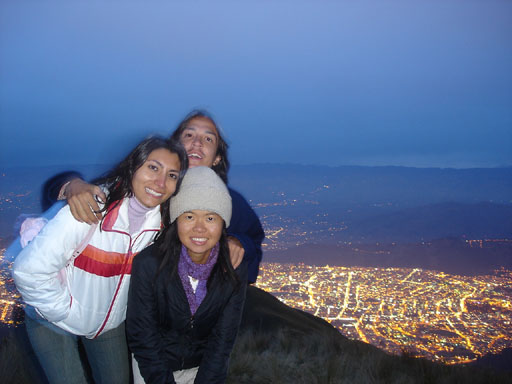The Storm
Thursday, September 29th, 200528 September 2005 (Wednesday) – Quito, Ecuador
We woke up to an unbelievably beautiful blue and sunny day. What a difference from yesterday! I actually had to put on my sun-block. Some people were even wearing sleeveless blouses. I was thinking, oh… what a pity, we could have gone up the Pichincha today instead, it would have been awesome to view all the mountains around.
Anyway, I had been a little undecided when to leave Quito, so that was why I was still lingering here. I felt that I had not known the Old Colonial Centre well yet. So, today, I wanted to walk around there a bit. But I think I should really get going by tomorrow.
I really loved wandering around to get to know a city centre. I tried various alleys and streets. Quito’s Colonial Centre is undulating, so sometimes, it would be quite a hike to go up. Also, in some streets, the pavements are really tiny, allowing only 1 person to walk. So, pedestrians often spill onto the roads, which are incidentally full of cars all the time.

I wandered into a small centro comercial and found a nice clean respectable place selling ‘seco de chivo’. Ismael had told me this is a very typical Ecuadorian dish and which I just had to try one day. Although ‘seco’ means ‘dry’, this dish actually came with a sauce. The owner was very friendly to me, claiming that they had been serving this dish for 40 years. OK, I would give it a shot. ‘Chivo’ is ‘mutton’. I had never gotten the chance to eat this meat here in South America as it seemed quite rare.
I visited the shop-cum-cafe-cum-museum called Tianguez under the Church of San Francisco. If you have dollars to burn, feel free to spend them merrily in this expensive shop. If you have nothing to burn, visit it as well. It is set in the underground cellars of the church. And the shop actually has several corridors, leading to other underground cellars. Many of the displays, including Ecuadorean crafts done in modern artistic styles, are very beautiful, so you can also treat it like a museum.
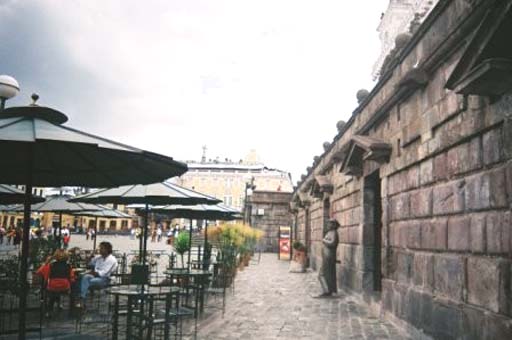
Back at the Centro Cultural Metropolitano, besides the World Press Photo 05 exhibition I visited last week, there was another photo exhibition. This was called AMRIK, which incidentally, was written in Arabic as well and I managed to read it based on my faint Arabic memories… yeh! It contained photos showing the Islamic cultures and influences in South America, with incredibly artistic and creative photographs taken from South American photographers. Spanish vocabulary also had a lot of influence from Arabic words, due to the proximity of the Iberian Peninsula to Northern Africa. Words like algodon (cotton), aduana (customs), zanahoria (carrot), alfombra (carpet), etc… And these words, due to the Spanish conquest, are used here in South America as well now. Interesting to see how the whole world is interconnected in this way.
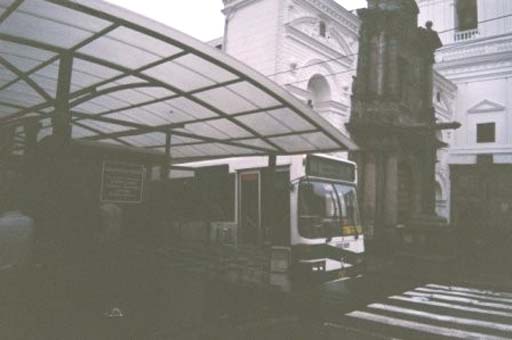
The sky had turned eerily grey by the time I stepped out of the Centro Cultural Metropolitano. There was a sense of urgency amongst the locals around the Plaza de la Independencia. I stumbled upon the same place that Ismael and Patricia took me to have a cup of hot chocolate last Friday, the place where we saw the traditional Ecuadorean dances. It was Palacio Arzobispal, an ex-monastery or something. I was walking towards it when I saw a gigantic flash of lightning streak across the sky. A deep groan of the thunder soon followed. Oops, how fast the weather changed within the last 3 or 4 hours!! I hurried into Palacio Arzobispal and soon, the storm broke. Well, at least I had a place to hide from the rain which seemed to be getting stronger and stronger.
Several people were doing the same. I sat in the patio, listening to the constant claps of deafening thunder and watching the storm unfold through the sky-light of the patio. The sky-light was actually exposed by the sides, so droplets of rain kept coming in. At first, it was tolerable, but soon, the rain got heavier and water seemed to be also seeping in through the parts between the glass. Finally, the place was totally rained in when splashes of water came in through the pipes by the sides of the walls. Everyone hurried away.
I must have stayed there for more than one and a half hour before daring to venture out again. Gosh, I want to see more of the centre but it was still raining. Nevertheless, with my umbrella out, I walked down several streets, getting splashed at by the passing cars all the way to La Basilica.
Outside La Basilica, it was crowded with people and umbrellas. I squeezed in and found the entire cathedral filled to the brim with faithful locals, most with lighted candles. I observed the mass for a while and the faces of the locals as they listened to the preacher and sang songs like ‘Hallelujah’ with conviction.
Gosh, the clouds now hung so low that we could not even see Pichincha at all! Now I am glad I went to Pichincha yesterday. Finally, when thoroughly soaked to the bones, especially the lower parts of my pants, I headed home. Yep, with the weather not so great in Quito, it is definitely time to leave the city. I truly had enjoyed my stay here, meeting Joshua and gang and getting to know their social projects, wow, I truly admire their selflessness, and being lucky enough to have Ismael and Patricia spend so much time with me!

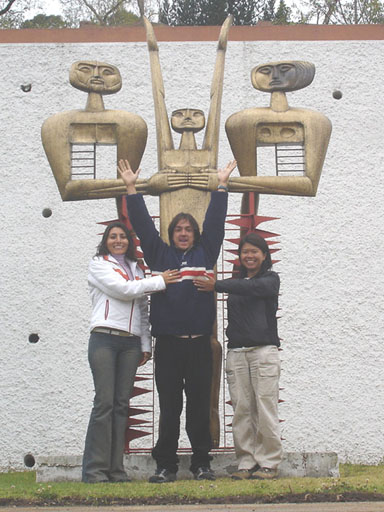
![Pleading, Guayasamin [by IE]](http://blogs.bootsnall.com/trisha/files/2008/01/Quito_guayasamin1.jpg)
![Innocence, Guayasamin [by IE]](http://blogs.bootsnall.com/trisha/files/2008/01/Quito_guayasamin2.jpg)
![Anguish, Guayasamin [by IE]](http://blogs.bootsnall.com/trisha/files/2008/01/Quito_guayasamin3.jpg)
![Suffering, Guayasamin [by IE]](http://blogs.bootsnall.com/trisha/files/2008/01/Quito_guayasamin4.jpg)

![His most famous work - Mother and Child [by IE]](http://blogs.bootsnall.com/trisha/files/2008/01/Quito_guayasamin6.jpg)
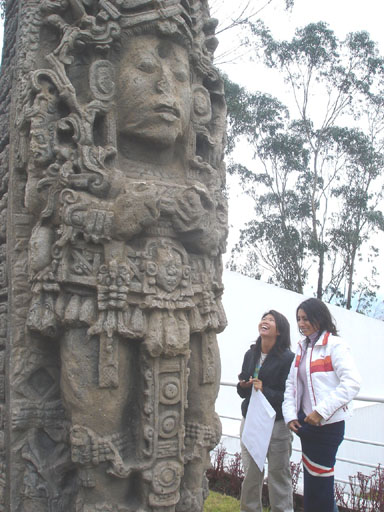

![Surrounding mountains around Pichincha [by IE]](http://blogs.bootsnall.com/trisha/files/2008/01/Quito_pichincha.jpg)
